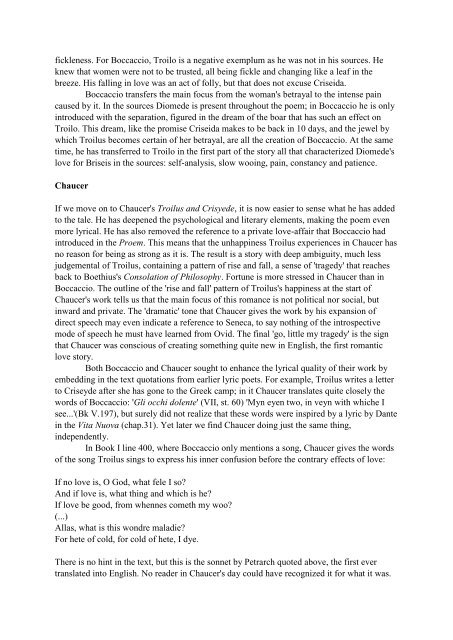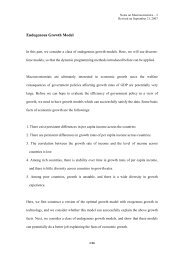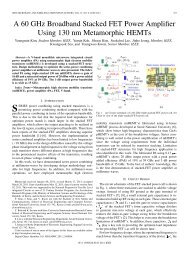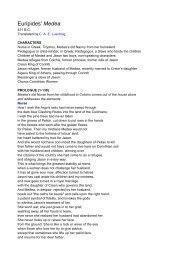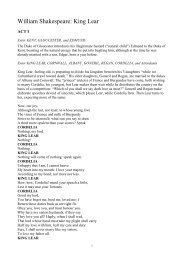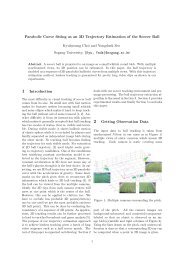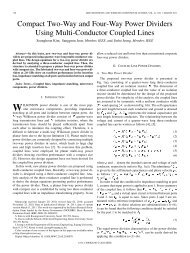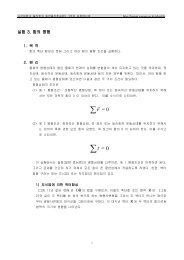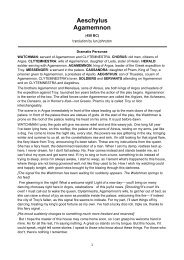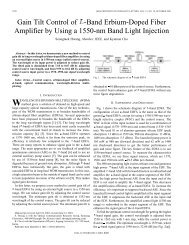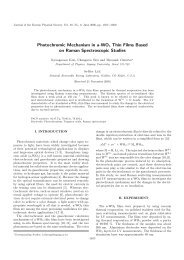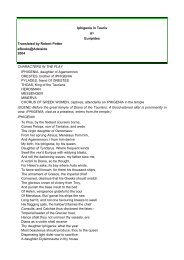Create successful ePaper yourself
Turn your PDF publications into a flip-book with our unique Google optimized e-Paper software.
fickleness. For Boccaccio, Troilo is a negative exemplum as he was not in his sources. Heknew that women were not to be trusted, all being fickle and changing like a leaf in thebreeze. His falling in love was an act of folly, but that does not excuse Criseida.Boccaccio transfers the main focus from the woman's betrayal to the intense paincaused by it. In the sources Diomede is present throughout the poem; in Boccaccio he is onlyintroduced with the separation, figured in the dream of the boar that has such an effect onTroilo. This dream, like the promise Criseida makes to be back in 10 days, and the jewel bywhich Troilus becomes certain of her betrayal, are all the creation of Boccaccio. At the sametime, he has transferred to Troilo in the first part of the story all that characterized Diomede'slove for Briseis in the sources: self-analysis, slow wooing, pain, constancy and patience.ChaucerIf we move on to Chaucer's Troilus and Crisyede, it is now easier to sense what he has addedto the tale. He has deepened the psychological and literary elements, making the poem evenmore lyrical. He has also removed the reference to a private love-affair that Boccaccio hadintroduced in the Proem. This means that the unhappiness Troilus experiences in Chaucer hasno reason for being as strong as it is. The result is a story with deep ambiguity, much lessjudgemental of Troilus, containing a pattern of rise and fall, a sense of 'tragedy' that reachesback to Boethius's Consolation of Philosophy. Fortune is more stressed in Chaucer than inBoccaccio. The outline of the 'rise and fall' pattern of Troilus's happiness at the start ofChaucer's work tells us that the main focus of this romance is not political nor social, butinward and private. The 'dramatic' tone that Chaucer gives the work by his expansion ofdirect speech may even indicate a reference to Seneca, to say nothing of the introspectivemode of speech he must have learned from Ovid. The final 'go, little my tragedy' is the signthat Chaucer was conscious of creating something quite new in English, the first romanticlove story.Both Boccaccio and Chaucer sought to enhance the lyrical quality of their work byembedding in the text quotations from earlier lyric poets. For example, Troilus writes a letterto Criseyde after she has gone to the Greek camp; in it Chaucer translates quite closely thewords of Boccaccio: 'Gli occhi dolente' (VII, st. 60) 'Myn eyen two, in veyn with whiche Isee...'(Bk V.197), but surely did not realize that these words were inspired by a lyric by Dantein the Vita Nuova (chap.31). Yet later we find Chaucer doing just the same thing,independently.In Book I line 400, where Boccaccio only mentions a song, Chaucer gives the wordsof the song Troilus sings to express his inner confusion before the contrary effects of love:If no love is, O God, what fele I so?And if love is, what thing and which is he?If love be good, from whennes cometh my woo?(...)Allas, what is this wondre maladie?For hete of cold, for cold of hete, I dye.There is no hint in the text, but this is the sonnet by Petrarch quoted above, the first evertranslated into English. No reader in Chaucer's day could have recognized it for what it was.


